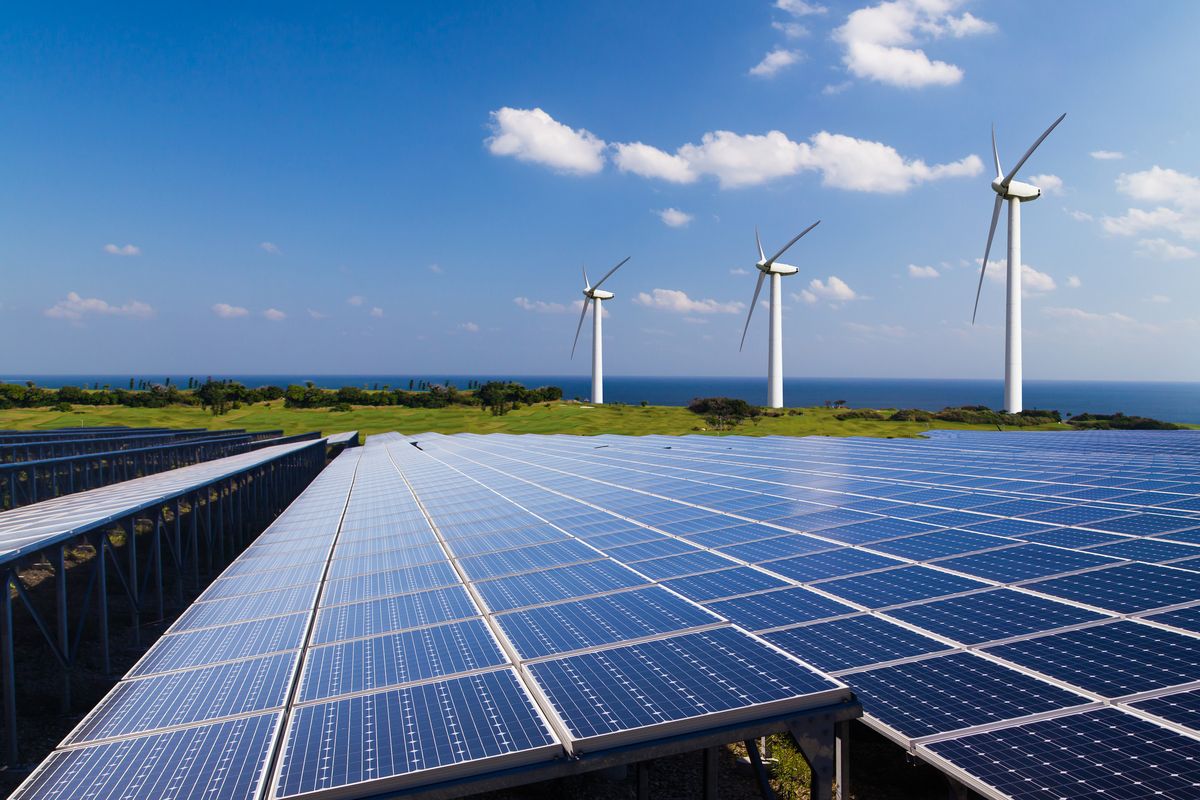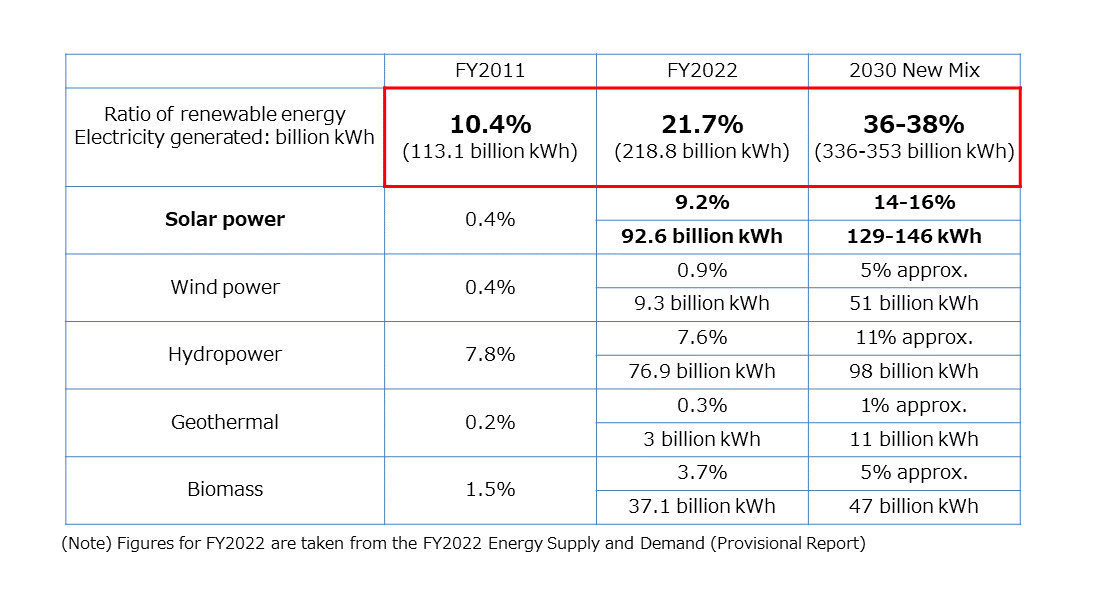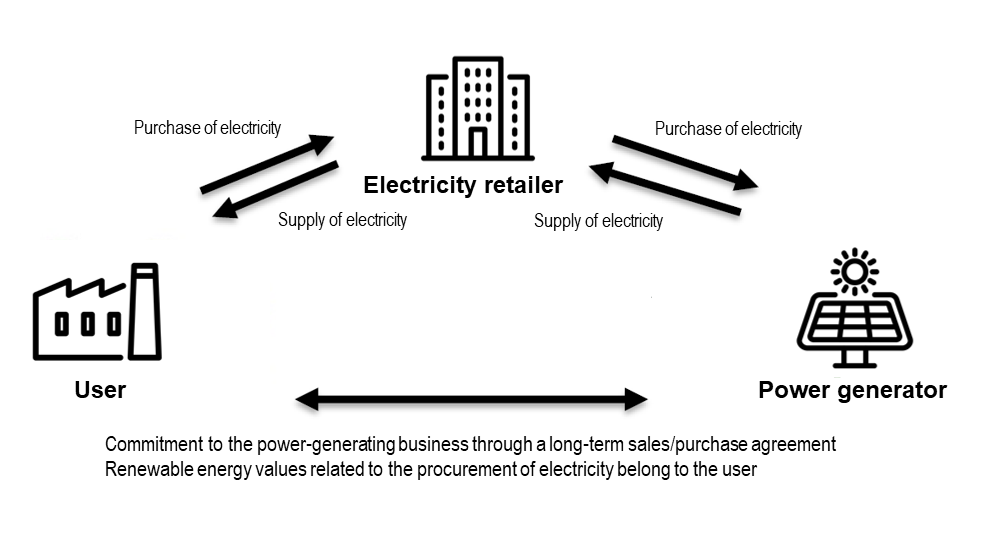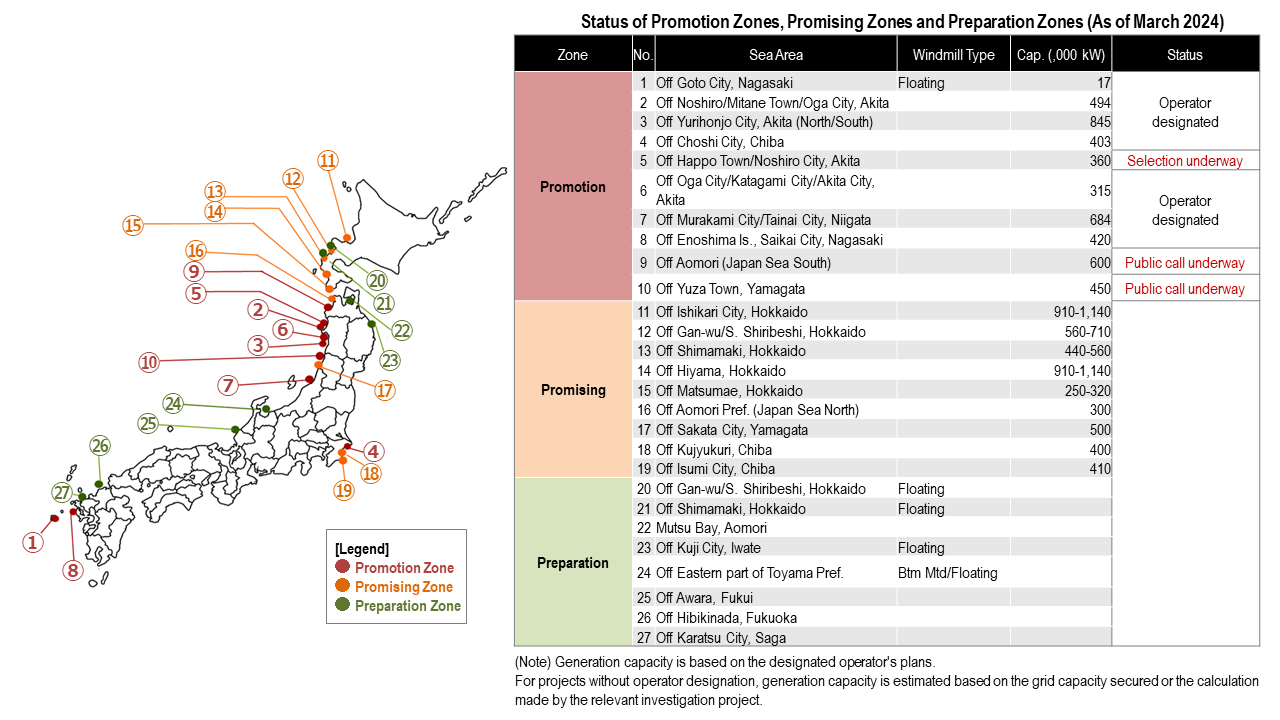Japan’s Strategy to Expand Renewable Energy Contributes to the World’s Efforts toward Tripling Renewable Energy
(Provisional translation)
(English ver.) 2024-08-02

The 28th Conference of the Parties to the UN Framework Convention on Climate Change (COP28) was held in 2023. The decision document adopted as an outcome of the Conference calls on the Parties to contribute to efforts toward tripling renewable energy capacity globally by 2030. How can Japan contribute to achieving this target? Japan started advancing various efforts to expand renewable energy long before COP28. This article shines light on the forefront of Japan’s policy regarding renewable energy, which is also expected to contribute to global efforts toward tripling renewable energy.
Tripling renewable energy globally
Taking into account the varying national circumstances, pathways, and approaches to the 1.5°C goal of the Paris Agreement, the decision document of COP28 calls on the Parties to contribute to global efforts in a nationally determined manner.
One of the fields where such global efforts are to be made is renewable energy. The document refers to the goal of tripling renewable energy capacity globally and doubling the global average annual rate of energy efficiency improvements by 2030. The UAE and the EU proposed the Global Renewables and Energy Efficiency Pledge to triple the world’s installed renewable energy power generation capacity and double the global average annual rate of energy efficiency improvements. Japan, along with other like-minded countries, participated in this pledge.
Japan started advancing various efforts to expand renewable energy long before it participated in this pledge. The table below shows changes in renewable energy ratios in the power source mix in Japan. Thanks to the introduction of the feed-in tariff (FIT) scheme in 2012, the installed capacity of renewable energy has been increasing rapidly. Its ratio in the power mix was 10.4% in 2011, which more than doubled in 2022 to reach 21.7%. The ratio of renewable energy in the energy mix projection for FY2030 is 36-38%.
Changes in the ratios of renewable energy in Japan

The Basic Policy for the Realization of GX (green transformation) was compiled in 2022, with the aim of achieving a transition from the current fossil fuel-centered industrial and social structures to clean energy-centered ones with no CO2 emissions. Efforts are being advanced based on this policy toward the maximum introduction of renewable energy. Some examples of these efforts are outlined below.
To further expand the introduction of solar power generation
Solar power is the most popular renewable in Japan. However, due to the scarcity of suitable terrain for the installation of photovoltaic power generation facilities in Japan, it is a critical challenge to secure suitable spaces for installation. The roofs of residential houses, factories, and warehouses are considered promising spaces with promotion measures such as the following being taken.
Support for the installation of solar panels on roofs
The current FIT and FIP (feed-in premium) schemes offer certain relaxed conditions for installation on the roof of a residential complex, including exemption from FIT/FIP bidding as a promotion measure.
Subsidies are granted for building a ZEH (net Zero Energy House) that makes energy consumption net zero with the combination of enhanced energy efficiency and solar power generation. Other support measures are in place to promote the installation of solar panels on roofs, such as a tax reduction on home loans for newly built houses with solar panels installed and a special tax system applied to renovations for energy efficiency improvement.
Development of a renewable energy power source by electricity users
The offsite power purchase agreement (PPA) is a model in which electricity users (corporations) generate electricity by renewables at their facilities in a place remote from their premises (offsite) and purchase the electricity from a retail electricity provider through the grid.
The offsite PPA is one of the User-Driven Alliance (UDA) models, in which electricity users lead the development of power sources using renewables and commit to the power generation business through a long-term purchase agreement or investment. In the UDA models, users, power generators, and retailers can advance the introduction of renewable energy in a concerted manner.
Outline of a UDA model

The introduction of renewable energy driven by electricity users is a promising method for the future. Support measures are available for these models if certain conditions, including the following, are met.
- The project is neither dependent on the FIT/FIP schemes nor intended for electricity wheeled for self-use.*
- The project is to supply electricity generated by solar power to a specific user under a long-term arrangement.
*A mechanism for transmitting electricity generated at a company’s own power plant in a remote location to the company’s facilities through a third-party transmission and distribution network.
Commercialization of next-generation solar cells
Efforts are being made to achieve public implementation of next-generation solar cells as quickly as possible. Perovskite solar cells are the most promising as they are light and flexible and can be installed in spaces where it is hard to install conventional solar cells. The primary material for producing perovskite solar cells is iodine, which can be procured in abundance domestically. The Government of Japan launched a project to support the development of perovskite solar cells. As global competition for the development of perovskite solar cells is intensifying, Japan needs to achieve public implementation of this technology as soon as possible before 2030, the target year of the project.
Next-generation technology for wind power generation, enhanced business discipline for renewable energy projects
Support measures are in place for other renewables. For example, several projects for offshore wind power generation have been advanced throughout the nation since legislative measures were taken in 2019 for the long-term, exclusive use of sea areas. As of February 2024, nearly 30 sea areas have been classified into categories such as "promotion zones", "promising zones" Operators have been designated for eight of these areas. It is expected that a large-scale project will also generate economic ripple effects.
Current status of sea areas surrounding Japan

Next-generation technologies are being developed for offshore wind power generation, in particular, for floating offshore wind farms. They can be installed in deeper sea areas compared with the conventional bottom-mounted type. However, there are challenges, such as high costs and the fact that large-scale production technologies are undeveloped. Utilizing the Green Innovation Fund and taking advantage of the underlying technology in which Japan has strengths, the country supports technological development that is also adaptable to situations in other Asian countries where weather and maritime conditions involve typhoons and lightning strikes.
While renewable energy is being expanded, there are some cases where concerns are raised in local communities about safety, disaster prevention, and landscapes. We need to address these concerns properly and advance the introduction of renewable energy in harmony with local communities. To this end, it is essential to organize systems with enhanced business discipline based on the development stages of a renewable energy generation project, such as land development, project expiration, and equipment disposal. We will pursue the maximum introduction of renewable energy in harmony with local communities through organized systems and stricter procedures.
Japan’s policy of expanding renewable energy is expected to promote the introduction of renewable energy in Asia through the development of next-generation technologies. It will also contribute to the world’s efforts toward tripling renewable energy. We will further expand our efforts in this regard.
Divisions in Charge
About this article
New and Renewable Energy Division, Energy Efficiency and Renewable Energy Department, ANRE
About the Special Contents
Research and Public Relations Office, Commissioner’s Secretariat, ANRE
![]() The original Japanese text of this article; Click here
The original Japanese text of this article; Click here